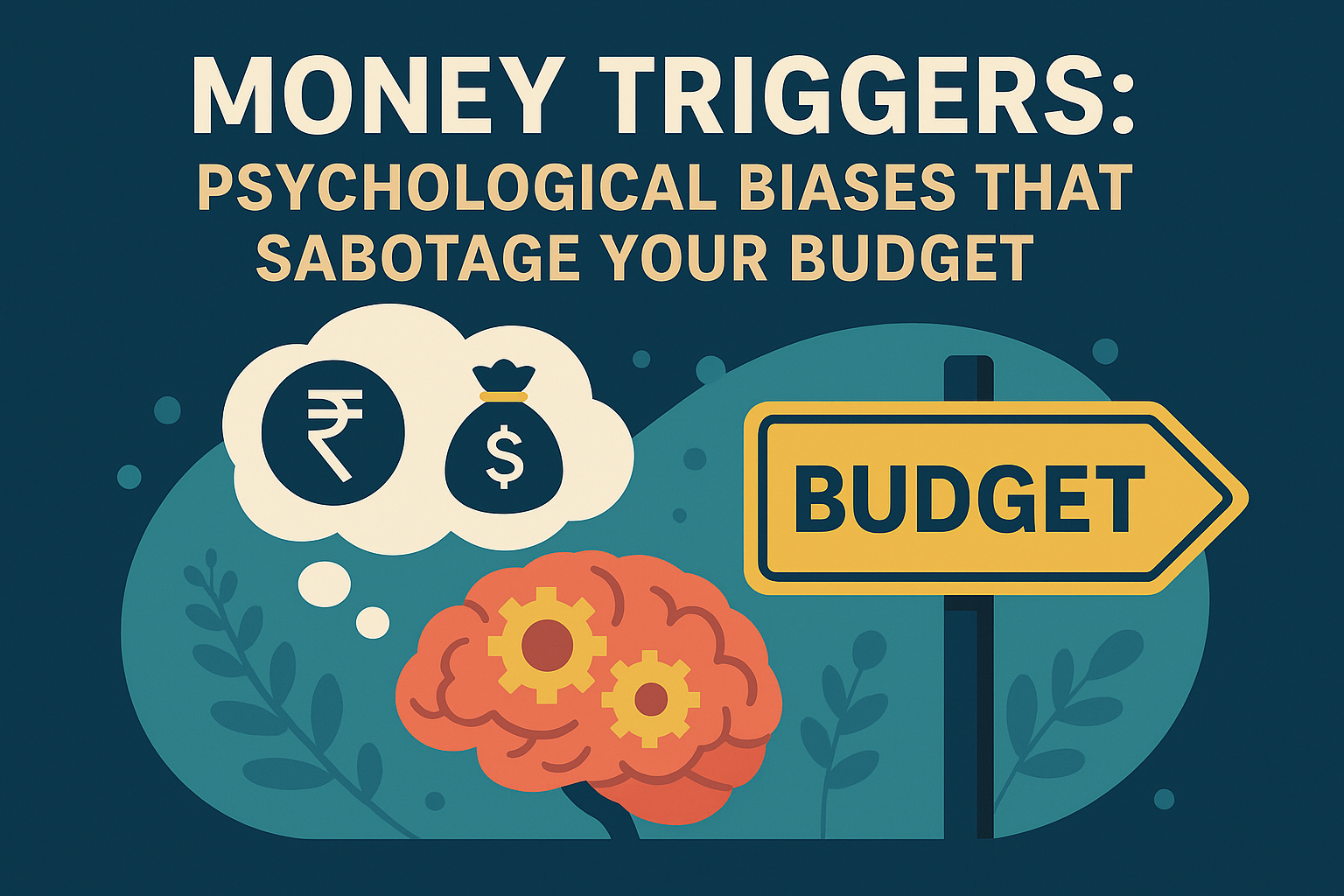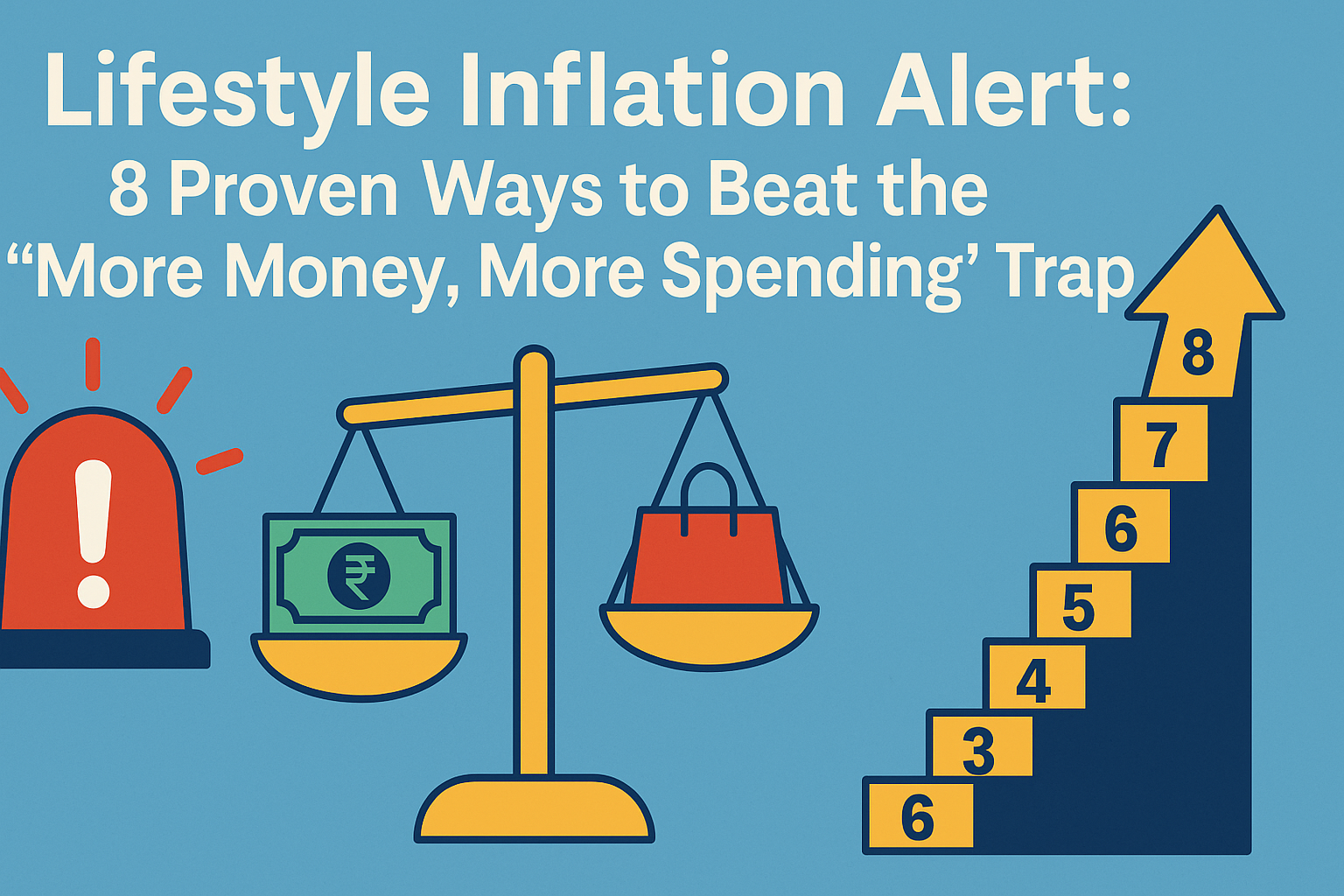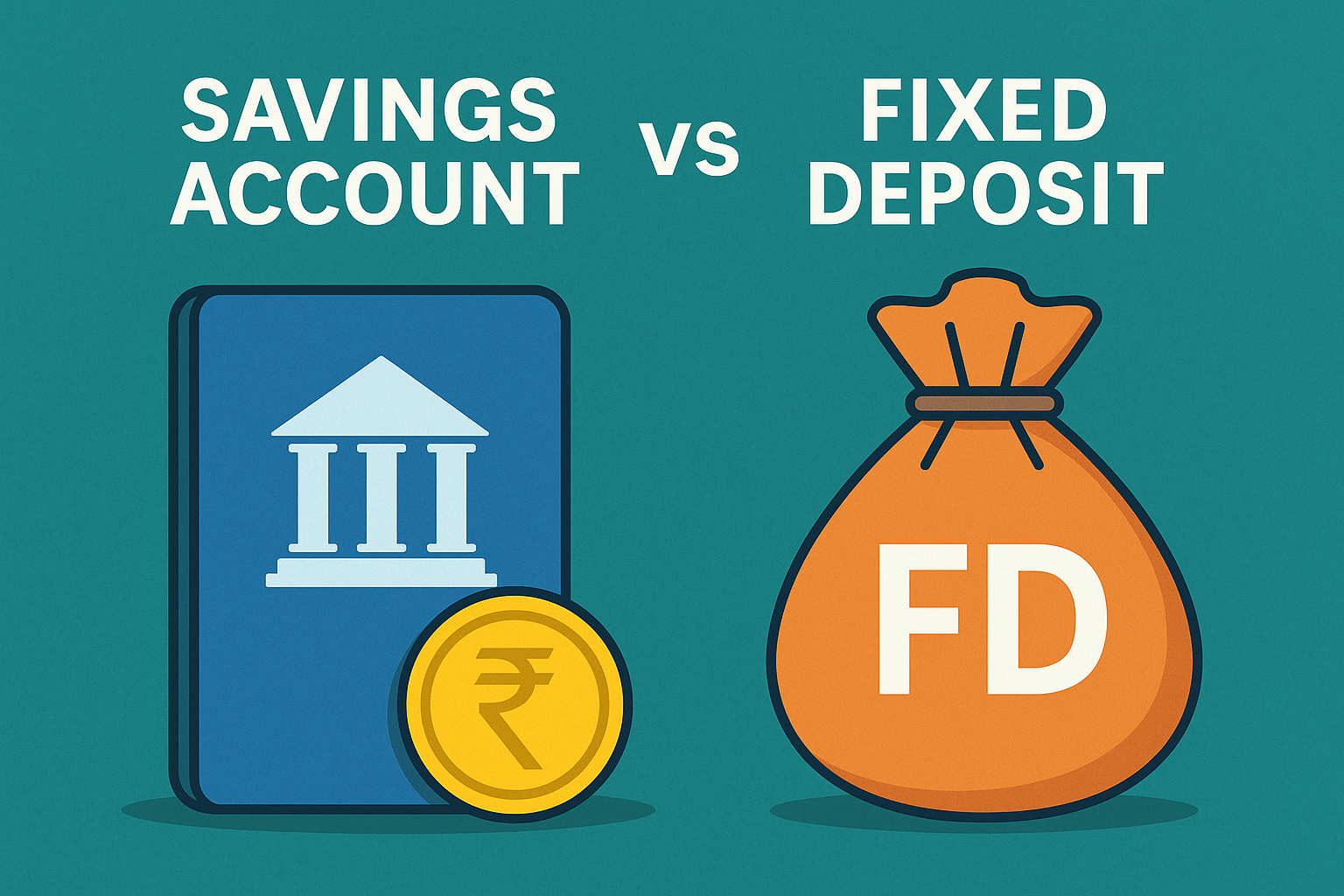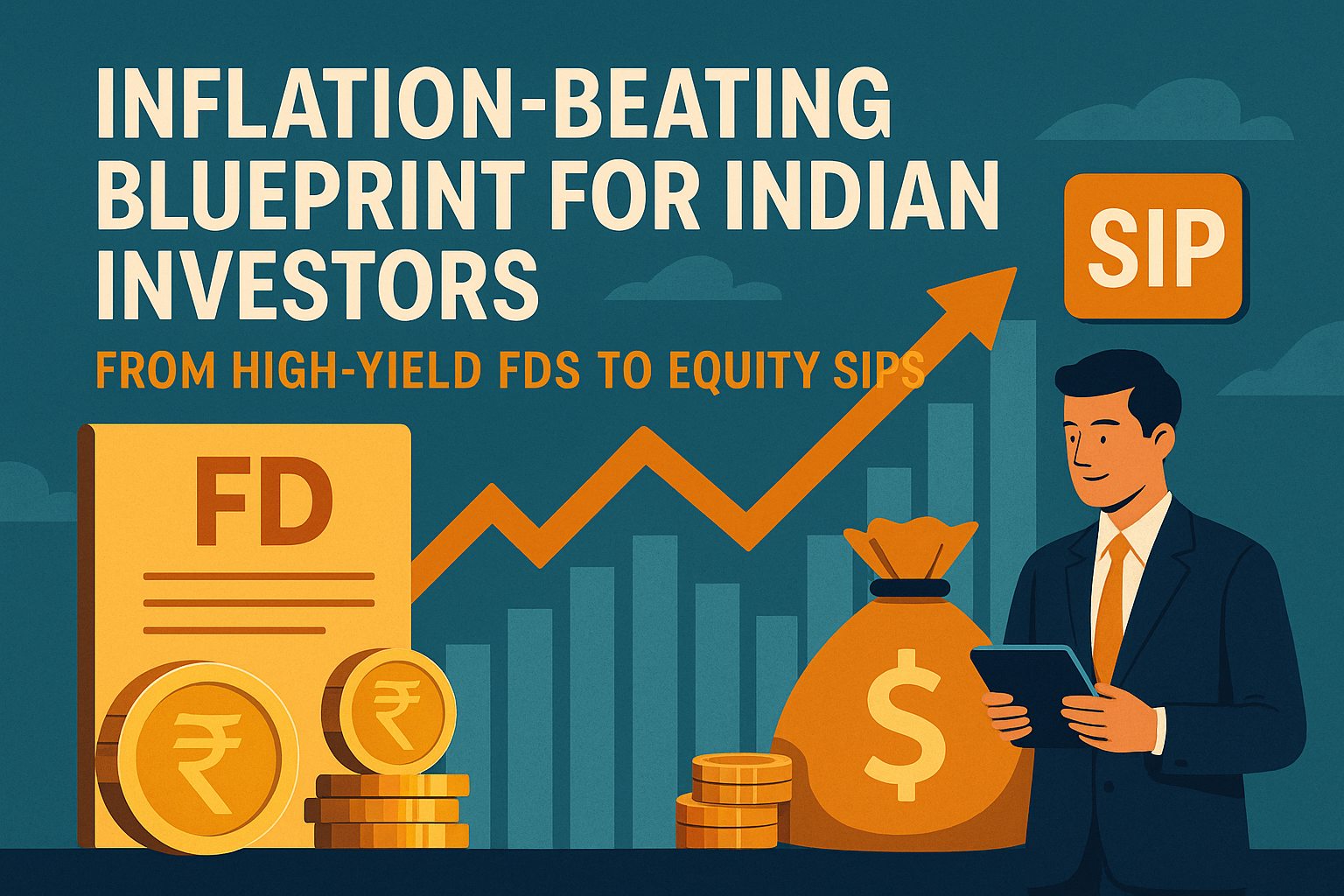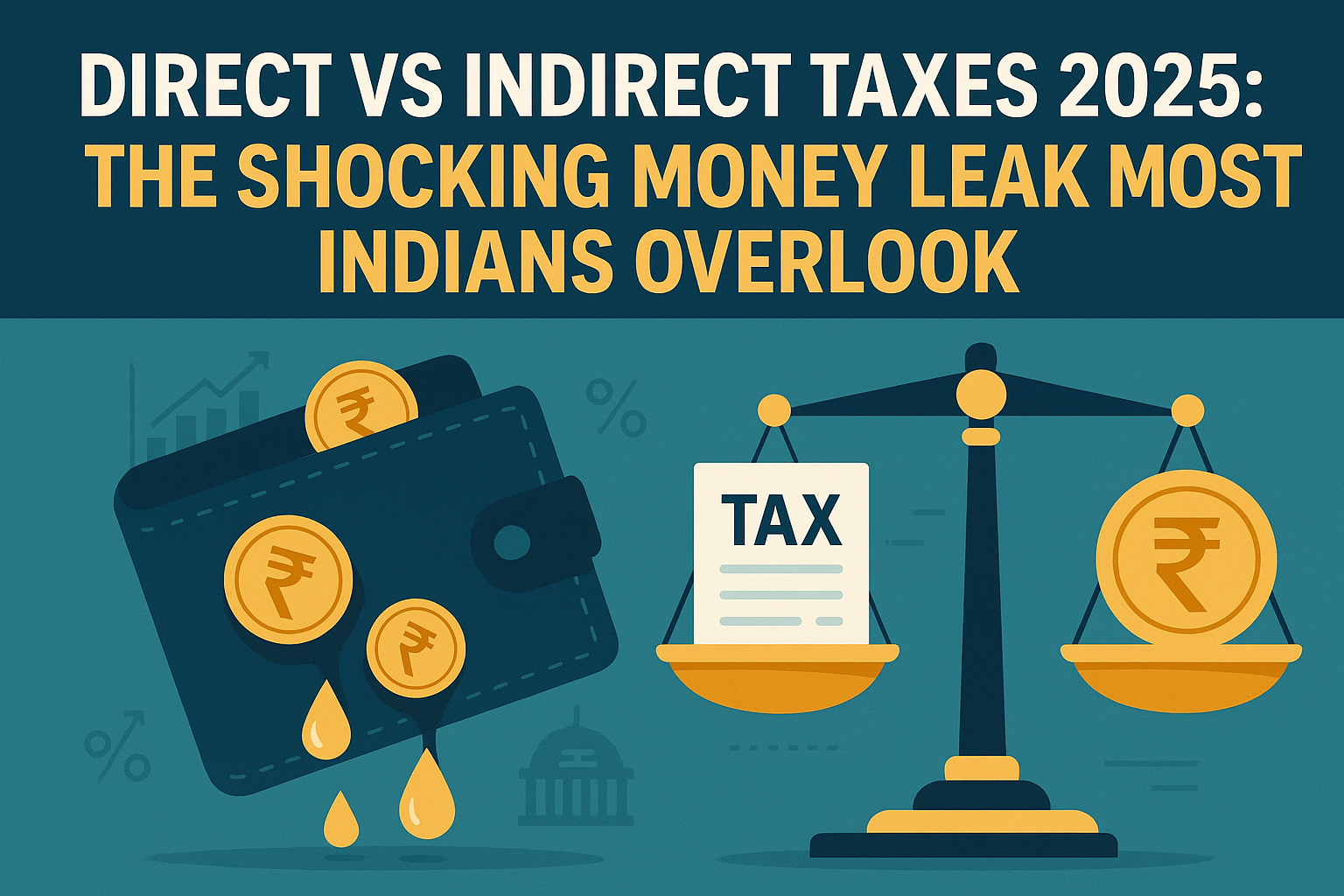
Direct vs Indirect Taxes
Direct Tax: A tax levied directly on an individual’s or organisation’s income, wealth, or profits, paid straight to the government by the taxpayer.
Indirect Tax: A tax imposed on the sale of goods and services, collected by an intermediary (such as a retailer or manufacturer) and remitted to the government, ultimately borne by the end consumer.
Comparison Table (7 Factors)
| Factor | Direct Taxes | Indirect Taxes |
|---|---|---|
| Payer | Paid directly by the individual or entity on earnings or assets | Collected by businesses or intermediaries, then passed on to the final consumer |
| Point of Collection | At the source—e.g., salary, property, corporate profits | At the point of sale—e.g., value added tax (VAT), sales tax, excise duty |
| Incidence | Burden cannot be shifted; the taxpayer who earns or owns pays it | Burden can be shifted to consumers through higher product or service prices |
| Progressivity | Generally progressive—higher incomes pay higher rates | Generally regressive—affects all consumers uniformly, regardless of income |
| Transparency | Highly transparent—tax returns and assessments clearly show amounts paid | Less transparent—embedded in market prices, so consumers may not see the breakdown |
| Scope for Loopholes | Fewer evasion opportunities due to direct audits and documentation | More evasion opportunities across supply chains (undervaluation, exemptions) |
| Administrative Complexity | Requires detailed records, periodic filings, assessments, and audits | Simpler for government to collect but complex for businesses to comply with multiple indirect tax regimes |
“Cheat-Sheet” Bullets for Featured Snippets
-
Direct vs. Indirect Taxes Defined: Direct taxes are paid by the taxpayer on income or assets; indirect taxes are collected by sellers and embedded in goods and services.
-
Tax Incidence: With direct taxes, the person or entity earning the income pays. With indirect taxes, businesses collect from consumers at sale.
-
Equity and Progressivity: Direct taxes are typically progressive (higher rates for higher incomes). Indirect taxes are regressive since they take the same percentage from all consumers.
-
Visibility: Direct taxes are explicit in tax filings. Indirect taxes are hidden in price tags, making them less visible to end users.
-
Loopholes and Evasion: Direct tax systems have stricter reporting and fewer loopholes; indirect taxes face more evasion risks through underreporting or classification errors.
-
Economic Behaviour Impact: Direct taxes can influence earning and investment decisions. Indirect taxes can alter consumption patterns by making certain goods or services more expensive.
-
Collection Points: Direct taxes are collected “at source” (e.g., payroll deductions). Indirect taxes are collected at retail or wholesale points, then remitted by the seller to the government.
What Is a Direct Tax?
A direct tax is a levy imposed directly on an individual or organisation based on income, wealth, or profits. In contrast to indirect taxes—which are collected at the point of sale and ultimately passed on to consumers—direct taxes are borne entirely by the payer. They are foundational to government revenue in India and reflect the taxpayer’s ability to pay, ensuring that individuals and corporations contribute proportionally according to their economic capacity.
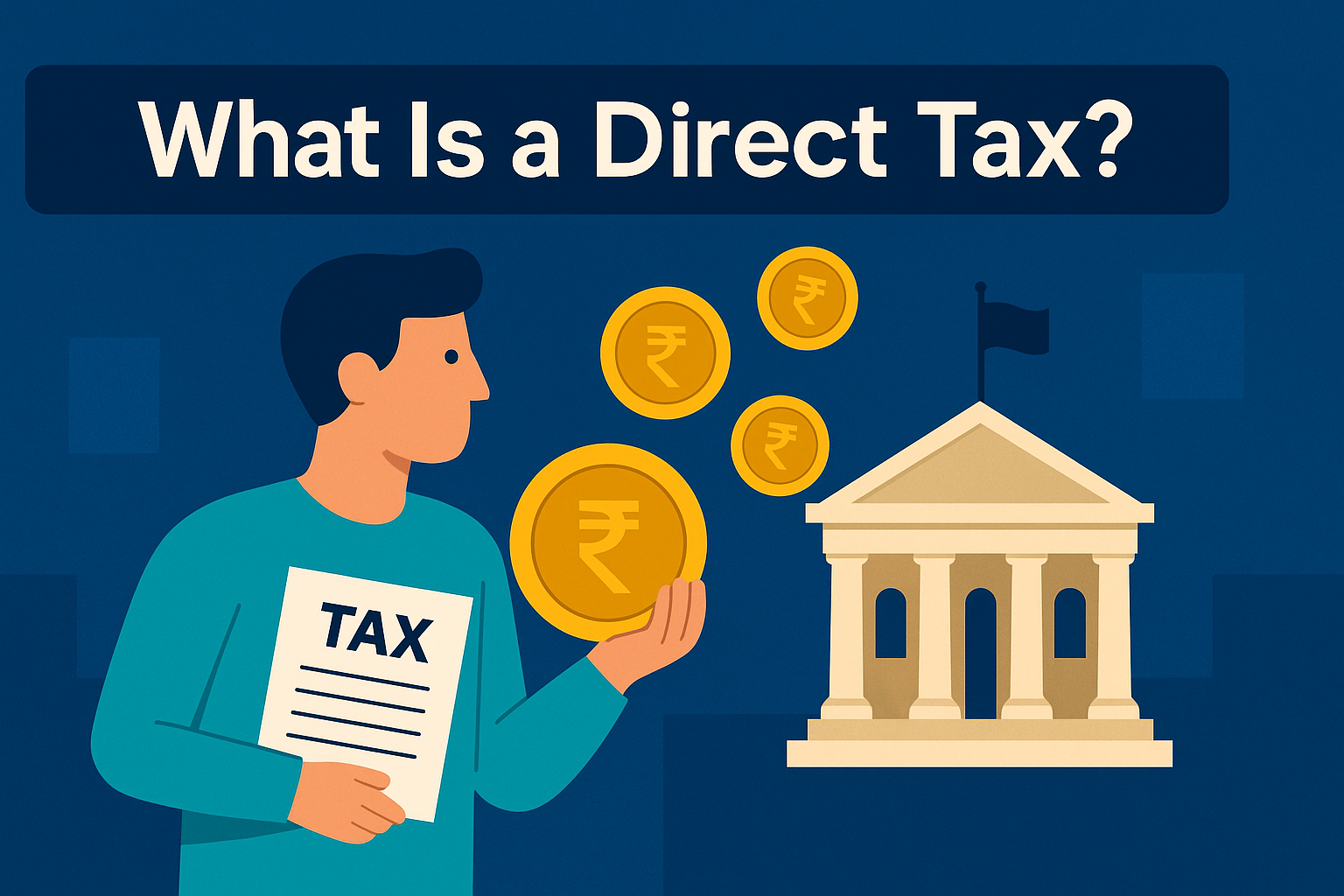
Legal Definition & ‘Ability-to-Pay’ Principle
Under Indian tax law, a direct tax is defined as any tax that is charged directly to the person on whom it is imposed and cannot be transferred to another entity. The guiding principle for direct taxation is the ‘ability-to-pay’ principle, which stipulates:
-
Equity and Fairness: Tax rates should align with the taxpayer’s financial capacity. Higher earners are subject to progressively higher rates, while low-income groups receive relief via exemptions or lower rates.
-
Ability Assessment: Income, profits, or capital holdings are assessed to determine tax liability. This ensures that those with greater means contribute a larger share of resources.
-
Legal Basis: The Constitution of India permits the Union Government to levy direct taxes. Specific statutes—primarily the Income Tax Act, 1961—define and categorise various direct taxes, their rates, exemptions, and procedural norms.
Major Direct Taxes in India (FY 2025-26)
India’s direct tax framework for the financial year 2025-26 encompasses several key levies. Each tax plays a strategic role in revenue collection, redistribution of wealth, and economic regulation. The primary direct taxes include:
-
Income tax:
• Levied on individuals, Hindu Undivided Families (HUFs), firms, and other entities.
• FY 2025-26 introduces new slab highlights (per lawrbit.com), altering thresholds and rates to align with inflation and policy goals.
• Slabs are typically progressive, encouraging savings while ensuring equity. -
Corporate Tax:
• Charged on the net profits of domestic and foreign companies operating in India.
• FY 2025-26 continued incentives for manufacturing startups and concessional rates for specified industries. -
Capital Gains Tax:
• Imposed on profits arising from the sale of capital assets—such as property, equities, or bonds.
• Categorised into short-term (assets held for less than specified durations) and long-term (assets held beyond those thresholds), each with distinct rate structures. -
Securities Transaction Tax (STT):
• Levied on the transfer of securities traded on recognised stock exchanges.
• Applied at specified rates on equity delivery, non-delivery, and derivatives segments. -
Other Direct Levies (e.g., Wealth Tax):
• Though wealth tax was abolished in 2015, certain cess and surcharge structures continue to be treated as direct components.
• These contributions further refine the tax framework by targeting high-net-worth individuals.
Below is a table summarising these major direct taxes for quick reference:
| Tax Type | Applicability | Key Feature (FY 2025-26) |
|---|---|---|
| Income-tax | Individuals, HUFs, Firms, AOPs, Corporations | New slab highlights Introduce revised thresholds and rates; progressive structure retained. |
| Corporate Tax | Domestic and foreign companies | Concessional rates remain for manufacturing startups; surcharge adjustments for large firms. |
| Capital Gains Tax | Sale of capital assets (property, equities, bonds) | Differentiated between short-term and long-term gains; indexed for inflation benefits. |
| Securities Transaction Tax (STT) | Equity delivery, non-delivery, and derivatives trades on stock exchanges | Rates standardised; minor adjustments to align with market trends. |
How It’s Collected: TDS, Advance Tax, Self-Assessment
The collection of direct taxes relies on a combination of Tax Deducted at Source (TDS), Advance Tax, and Self-Assessment procedures. Each mechanism ensures timely remittance of taxes and reduces year-end compliance burdens.
-
Tax Deducted at Source (TDS):
-
Definition: TDS is a system where tax is deducted at the point of income generation. Employers, financial institutions, or other payers deduct tax before remitting salaries, interest, rent, or professional fees to the beneficiary.
-
Objective: Ensures a steady inflow of tax revenue and minimises defaults.
-
Applicable Rates: Governed by the Income Tax Act, varying by nature of payment—e.g., salary TDS follows the employee’s income slab, while interest TDS might be at 10% (subject to PAN availability).
-
-
Advance Tax:
-
Definition: Advance Tax requires taxpayers to estimate and pay their tax liability in instalments during a financial year.
-
Who Must Pay: Individuals and entities with a tax liability exceeding ₹10,000 in a year must remit advance tax.
-
Payment Schedule: Typically split into quarterly instalments—15% by 15 June, 45% by 15 September, 75% by 15 December, and 100% by 15 March (FY 2025-26).
-
Penalty for Default: Interest under Sections 234B and 234C applies if advance tax instalments are missed or underpaid.
-
-
Self-Assessment:
-
Definition: After accounting for TDS and advance tax, taxpayers compute their final liability or refund during self-assessment and pay any remaining tax before filing.
-
Process:
-
Calculate Total Taxable Income: Aggregate income across sources, apply deductions, and arrive at taxable income.
-
Compute Tax Liability: Based on prevailing slab rates, including cess and surcharge for FY 2025-26.
-
Adjust Credits: Deduct TDS, advance tax, and other prepayments.
-
Pay Balance Tax: If any shortfall remains, the taxpayer pays through Form ITNS 280 before filing the return.
-
-
Return Filing: Income tax returns must be filed by the due date—usually 31 July of the assessment year—after self-assessment is complete.
-
What Is an Indirect Tax?
An indirect tax is a levy imposed on the consumption of goods and services rather than on income or profits. Unlike direct taxes, which are charged directly to individuals or businesses based on their earnings or assets, indirect taxes are embedded in the price of products and are ultimately borne by the end consumer. The burden of an indirect tax can be shifted at each stage of production and distribution until it reaches the final point of sale, making it a key revenue source for governments without directly reducing taxpayers’ disposable income.

Legal Definition & ‘Tax-on-Spending’ Principle
Legally, an indirect tax is any tax that is charged at the point of sale or import, collected by an intermediary (such as a manufacturer, wholesaler, or retailer), and remitted to the government. The foundational principle of indirect taxation is the ‘tax-on-spending’ principle, which operates on these core tenets:
-
Consumer-Based Liability: Under this principle, the person who ultimately consumes the good or service bears the tax burden. If a manufacturer pays the tax initially, they factor it into the selling price. Subsequent buyers—retailers or wholesalers—continue to pass this tax along until the consumer pays via the final transaction.
-
Revenue Stability: By embedding taxes into everyday transactions—such as purchasing household items, fuel, or imported goods—governments secure a stable and continuous flow of revenue. This approach is especially effective in economies with large unorganised sectors, where direct tax compliance may be challenging.
-
Transparency & Compliance: Although less transparent to end users (since the tax amount is hidden within the price), the ‘tax-on-spending’ model simplifies compliance for authorities. Each business in the supply chain is responsible for collecting and remitting the tax on its sales, creating multiple checkpoints that minimise evasion.
Core Indirect Taxes Today
India’s indirect tax framework has evolved significantly over recent years, centring on a unified Goods and Services Tax (GST) regime and complemented by customs and excise duties on specific commodities. The principal components include:
GST Structure (CGST, SGST, IGST)
The Goods and Services Tax (GST) is a destination-based—“taxed-at-consumption”—system that subsumed most prior indirect levies (such as service tax, VAT, and excise duties). Its structure comprises three key elements:
| Tax Component | Applicability | Administering Authority |
|---|---|---|
| Central GST (CGST) | Levied on intra-state supplies of goods and services; collected by the Central Government | Central Government Tax Dept. |
| State GST (SGST) | Levied on intra-state supplies of goods and services; collected by the State Government | Respective State Tax Dept. |
| Integrated GST (IGST) | Levied on inter-state supplies and imports of goods and services; collected by the Central Government; redistributed between the centre and States per defined formula | Central Government Tax Dept. |
-
CGST & SGST (Intra-State Transactions): For any sale of goods or services within the same state, both CGST and SGST apply. For example, if a manufacturer in Maharashtra sells to a retailer in Maharashtra, the combined GST rate is split equally—50% CGST (to the Centre) and 50% SGST (to the Maharashtra government).
-
IGST (Inter-State Transactions & Imports): When goods or services move between different states (e.g., from Karnataka to Tamil Nadu), IGST is levied. The entire IGST amount is collected by the central government, which later apportions the state share based on destination. Similarly, all imports face IGST at the border, ensuring parity between domestic and imported goods.
Customs & Excise on Petroleum/Alcohol
Although GST subsumes most indirect taxes, petroleum products and alcohol for human consumption remain outside the GST umbrella. These items continue to attract:
-
Customs Duty (on Imports):
• Petroleum & Liquefied Petroleum Gas (LPG): At the port of entry, customs duties apply to imported crude oil, refined petroleum products, and LPG. Rates fluctuate based on international prices and government policy directives.
• Alcoholic Beverages: Imported wines, spirits, and beer attract customs duties calculated as a fixed percentage of the assessable value or a combination of specific and ad valorem rates, depending on the type of beverage. -
Central Excise Duty (on Domestic Production):
• Crude Oil & Refined Petroleum Products: Domestic refineries pay excise duty on products like petrol, diesel, kerosene, and aviation turbine fuel. These rates are frequently revised in response to global crude prices and fiscal considerations.
• Ethyl Alcohol & Spirits: While alcoholic liquor for human consumption is primarily under state excise jurisdictions, ethyl alcohol used for industrial or fuel purposes is subject to central excise.
The persistence of customs and excise duties on these commodities reflects policy objectives—such as controlling consumption of demerit goods (alcohol) or stabilising revenue from volatile petroleum markets—while maintaining decentralised control for states over alcohol taxation.
Collection Chain: Manufacturer → Retailer → Consumer
The indirect tax collection chain maps how taxes flow through successive stages of production and distribution:
-
Manufacturer Level:
-
Tax Liability Calculation: Manufacturers calculate GST liability on the total value of goods produced, minus input tax credits for raw materials. For customs and excise, they factor in duty rates based on the nature of the product (e.g., excise on petrol).
-
Invoice Issuance: Each sale from manufacturer to wholesaler or distributor includes a tax-inclusive invoice, clearly showing the GST or excise component.
-
-
Distributor/Wholesaler Level:
-
Input Tax Credit (ITC): Wholesalers claim ITC for GST paid on purchases, reducing their net tax payable when selling onwards. For example, if a wholesaler buys ₹100,000 worth of goods with ₹18,000 GST, they can claim that ₹18,000 against their output GST when selling to retailers.
-
Set-Off & Remittance: When selling to retailers, the wholesaler adds applicable GST or excise to the invoice. The net tax remittance equals output tax minus eligible ITC.
-
-
Retailer Level:
-
Final Tax Collection: Retailers collect the embedded GST from end consumers at the point of sale. In the case of exempted goods like unbranded food grains, no GST applies. For petroleum and alcohol—subject to state excise—retailers collect state-specific VAT or excise duty as determined by local statutes.
-
Invoice & Filing: Retailers maintain detailed invoices showing the breakup of base price and tax. Periodic GST returns or excise returns are filed, reflecting total sales, purchases, and net tax liability.
-
-
Consumer Level:
-
Tax-On-Spending: The end consumer pays a tax-inclusive price. Although the tax is not separately remitted by them, their expenditure effectively finances government revenue. For instance, if the shelf price of a smartphone is ₹50,000 and GST is 18% (₹9,000), the consumer pays ₹59,000, covering the full indirect tax burden.
-
This structured chain—Manufacturer → Distributor/Wholesaler → Retailer → Consumer—ensures that each intermediary collects and remits taxes accurately while claiming eligible credits. By the time the product or service reaches the final buyer, all upstream tax obligations have been reconciled, and the consumer’s payment completes the revenue cycle.
Direct vs. Indirect: 7 Key Differences That Matter
| Factor | Direct Tax | Indirect Tax |
|---|---|---|
| Incidence & Burden Shift | The tax burden rests on the taxpayer and cannot be shifted, e.g., income tax paid by an individual or company. | Tax incidence can be shifted along the supply chain, e.g., GST or sales tax collected by retailers from consumers. |
| Elasticity with Income | Highly elastic—tax liability increases with income growth; progressive rate structures apply. | Low elasticity—consumption patterns change less with income; tax paid is roughly similar across income levels. |
| Inflation Impact | Direct taxes adjust via slab revisions, but inflation can push payers into higher brackets (“bracket creep”). | Indirect taxes mechanically rise with price inflation, increasing revenue without explicit rate changes. |
| Administrative Cost | Higher compliance overhead—requires record-keeping, periodic filings, audits, and assessments. | Lower direct administration—collected at point of sale with simple invoice accounting, though businesses must comply with multiple returns. |
| Evasion Difficulty | Harder to evade due to audits, TDS, advance tax, and self-assessment mechanisms. | Easier to evade through under-invoicing, misclassification, or informal transactions in unorganised sectors. |
| Equity vs. Regressivity | Generally progressive and equitable—higher-income earners pay a larger share of the total tax. | Generally regressive—lower-income consumers spend a larger portion of income on taxed goods and services. |
| Budget-Share Trends | Typically represents a smaller share of total revenue as governments aim to shift toward a consumption-based levy. | Growing share targeted at 55% of total tax revenue by 2027, reflecting a broader move to indirect taxation. |
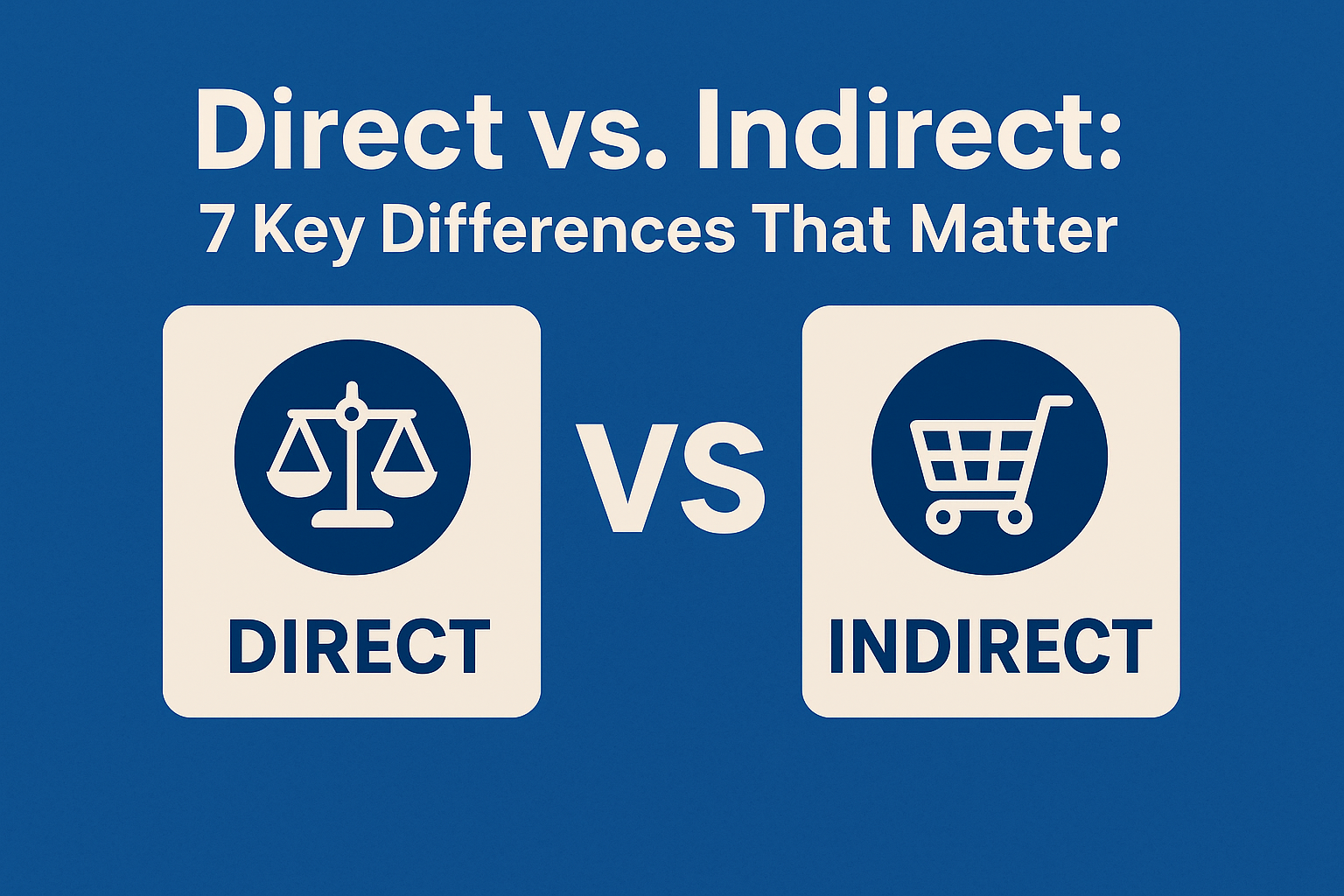
Incidence & Burden Shift:
In a direct tax system, the incidence and burden remain with the original taxpayer—salaried individuals, property owners, or corporate entities—without any transferability. By contrast, an indirect tax imposes liability at each stage of production or distribution, allowing manufacturers or retailers to pass the tax on to end consumers. As a result, indirect taxes on goods and services (for example, GST or VAT) shift continuously until the final point of sale, whereas direct taxes on income or profit cannot be shifted beyond the payer.
Elasticity with Income:
Direct taxes are designed to move in tandem with income levels: as income rises, taxpayers fall into higher tax slabs or face steeper corporate tax burdens. This elastic relationship ensures that tax revenue grows proportionally with economic prosperity. Conversely, indirect taxes exhibit low elasticity relative to income because taxable consumption does not rise or fall as sharply as income does. Even when incomes fluctuate, consumers continue to purchase essential goods and services, maintaining a relatively stable revenue stream for indirect taxes.
Inflation Impact:
Inflation influences direct and indirect taxes differently. With direct taxes, governments periodically revise income tax slabs and deduction thresholds to counteract bracket creep—whereby inflation pushes taxpayers into higher rate brackets without real income gains. However, if adjustments lag behind inflation, taxpayers can face a heavier real burden. Indirect taxes, on the other hand, automatically increase revenue in line with price inflation since the tax is levied as a percentage of the product price. Thus, without changing tax rates, an inflationary environment boosts indirect tax collections.
Administrative Cost:
Administering direct taxes demands substantial infrastructure: taxpayers must maintain detailed records, file annual or quarterly returns, and undergo assessments or audits by tax authorities. Compliance costs include bookkeeping, professional fees, and time spent on filings. Indirect taxes require businesses to issue tax-inclusive invoices and file periodic GST or sales tax returns. While businesses incur compliance expenses, the government benefits from a simpler collection mechanism at points of sale, reducing per-taxpayer administrative overhead compared to frequent assessments.
Evasion Difficulty:
Direct taxes feature multiple enforcement safeguards—such as tax deducted at source (TDS), advance tax payments, and self-assessment—making evasion more difficult. Audits and cross-verification of financial statements further deter underreporting. In contrast, indirect taxes are collected at various stages in the supply chain, creating more opportunities for evasion: manufacturers or wholesalers might understate transactions, misclassify goods into lower tax brackets, or transact off-the-books, especially in unorganised or cash-driven sectors. These loopholes complicate enforcement in indirect tax regimes.
Equity vs. Regressivity:
Direct taxes are inherently progressive: policymakers impose higher marginal rates on top income slabs or larger corporate profits, aligning tax liability with the taxpayer’s ability to pay. This promotes equity by redistributing wealth and providing relief to lower-income groups through exemptions or lower slab rates. In contrast, indirect taxes are regressive: they levy the same percentage on every consumer, regardless of income. Because lower-income households spend a larger proportion of their earnings on consumption, they shoulder a heavier relative burden compared to wealthier individuals who can save or invest a greater share of income.
Budget-Share Trends:
Over recent decades, governments worldwide and in India have shifted toward consumption-based indirect taxation to stabilise revenue and streamline multiple levies. India, in particular, targets indirect taxes to constitute 55% of total tax revenue by 2027. This shift reflects a strategic move to reduce reliance on direct taxes—which can be more volatile and politically sensitive—and to broaden the tax base through easier collection mechanisms embedded in everyday transactions.
Budget 2025-26 Updates You Can’t Ignore
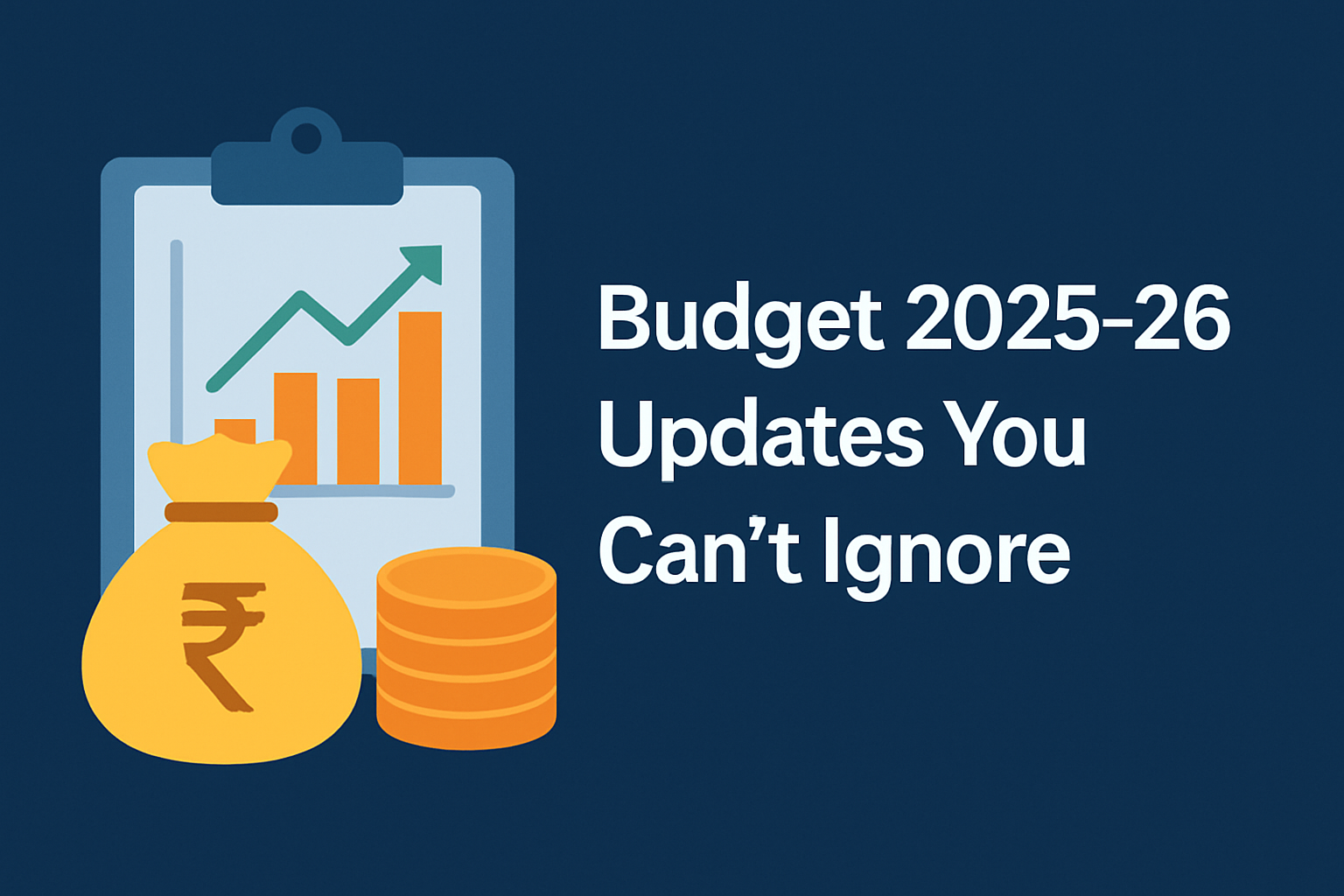
New Rebate Limit & Slab Tweaks
The Union Budget 2025-26 introduces a new rebate limit designed to provide relief to low- and middle-income taxpayers. Under this update, individuals with taxable income up to the revised threshold will no longer owe any income tax, thereby increasing disposable income and incentivising consumption. Additionally, slab tweaks adjust marginal rates across various income brackets to align with inflation and economic realities. For example, the previous lower slab of ₹2.5 lakh–₹5 lakh experiences a slight reduction in rate, while higher brackets see incremental changes to maintain progressivity. These adjustments ensure that while the government secures adequate revenue, salary earners and senior citizens benefit from reduced effective tax burdens.
Key points under the new rebate limit & slab tweaks:
-
Higher Exemption Threshold: Taxpayers earning below the new rebate limit pay zero tax, boosting take-home pay.
-
Reduced Marginal Rates: Middle-income slabs see a marginal rate reduction of up to 1%, making the tax regime more equitable.
-
Progressive Structure Maintained: Upper-income brackets retain higher rates to uphold the ability-to-pay principle.
By recalibrating slabs, the government strikes a balance between stimulating consumption and maintaining fiscal prudence. These changes also simplify computations for taxpayers and may reduce compliance costs, especially for those who previously fell just above the older rebate threshold.
Proposed GST Rate Rationalisation & Compensation-Cess Sunset
As part of its indirect tax reform, the 2025-26 budget proposes GST rate rationalisation aimed at streamlining multiple tax slabs into fewer, more transparent rates. Current models often include four or five distinct GST slabs; rationalisation may consolidate these into three—5%, 12%, and 18%—to minimise confusion and curb evasion. This overhaul targets:
-
Eliminate Anomalies: By merging similar goods and services under a single rate, taxpayers face fewer classification disputes.
-
Reduce Compliance Burden: Fewer rates simplify returns, invoicing, and filings for businesses, particularly benefiting small businesses with limited accounting resources.
-
Boost Revenue Efficiency: A rationalised structure helps plug rate-specific loopholes, leading to more consistent collections.
Concurrently, the budget signals the sunset of the compensation cess—a temporary levy introduced to compensate states for any revenue shortfall post-GST rollout. With state finances stabilised, the scheduled phase-out will gradually reduce cess rates over the next two fiscal years. Key implications include:
-
Lower Effective Prices: Goods previously bearing higher cesses (like cigarettes or motor vehicles) will see price corrections, benefiting frequent online shoppers who purchase electronics and other consumer durables.
-
State Revenue Transition: States will rely more on revenue-sharing mechanisms and centrally distributed GST pools instead of distinct compensation payouts.
Overall, proposed rationalisation and the compensation-cess sunset aim to create a more transparent GST ecosystem, ensuring that businesses—from manufacturers to retailers—face simplified tax structures while consumers enjoy stable pricing.
Impact Table: Salary Earner, Senior Citizen, Small Business, Frequent Online Shopper
| Category | Key Benefit | Implication |
|---|---|---|
| Salary Earner | Higher rebate limit and slab tweaks reduce taxable income directly | More take-home pay; simplified filing for incomes below the new rebate threshold |
| Senior Citizen | Slab tweaks increase exemption for retirees | Enhanced relief on pension income; lower overall tax liability |
| Small Business | GST rate rationalisation lowers compliance complexity | Easier classification of goods/services, reduced accounting costs and fewer filing discrepancies |
| Frequent Online Shopper | GST rationalisation and compensation-cess sunsets lower prices on e-commerce items | Reduced GST on consumer electronics and lifestyle products; savings on high-value online purchases |
Why Direct Taxes Shape Your Personal Wealth
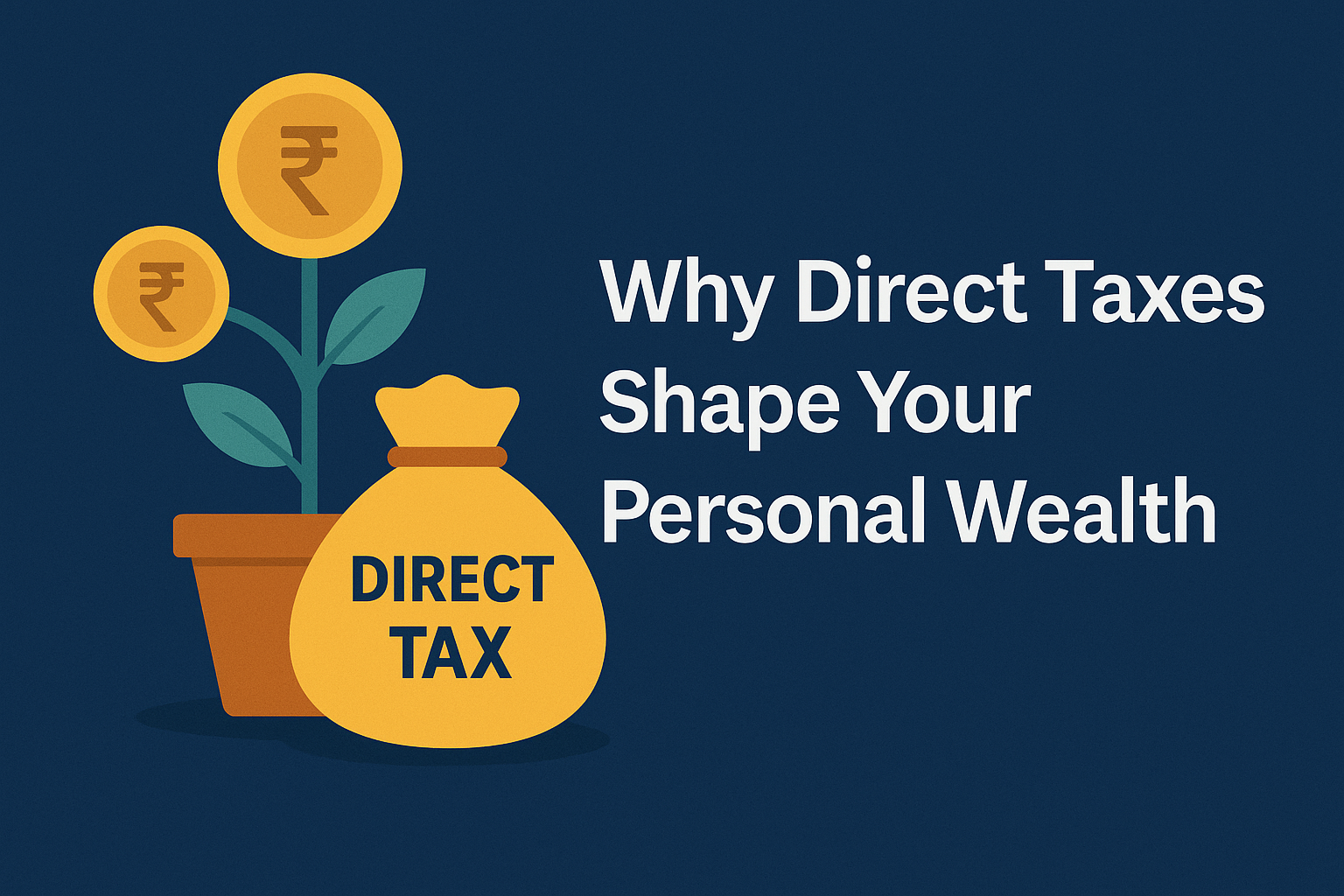
Cash-flow Hit vs. Long-term Social Benefits
Direct taxes, levied on income and profits, create an immediate cash-flow hit for taxpayers. When you receive a salary or earn investment returns, a portion is deducted upfront through mechanisms like Tax Deducted at Source (TDS) or advance tax payments. This upfront reduction in disposable income can feel significant, especially for middle-income households balancing monthly expenses. However, these same direct tax contributions fund critical public services—such as healthcare, education, infrastructure, and social welfare schemes—that yield long-term social benefits. By pooling resources through progressive tax slabs, governments can invest in programmes like subsidised medical insurance or public schooling, which indirectly enhance your family’s future earning potential and overall quality of life. While the immediate impact reduces spendable income, the broader societal returns—better roads, improved public health, and social security nets—translate into higher collective wealth over time.
New-vs-Old Regime Decision Tree (Flow-Chart Suggestion)
Selecting between the new and old direct tax regimes is a crucial decision that directly affects your take-home pay and savings strategy. To simplify this choice, a decision tree can guide taxpayers based on income level, eligible deductions, and exemption usage:
-
Start: Identify your total annual taxable income.
-
Step 1 – Deduction Usage
-
Do you claim significant deductions under Section 80C (up to ₹1.5 lakh), 80D (medical insurance), or 24(b) (home loan interest)?
-
Yes → Proceed to Step 2.
-
No → Favour the New Regime (lower slab rates, no deductions/exemptions).
-
-
-
Step 2 – Net Taxable Income Comparison
-
Calculate tax liability under the Old Regime (apply slab rates after factoring in deductions/exemptions).
-
Calculate tax liability under the New Regime (apply revised, lower slab rates without deductions/exemptions).
-
If Old Regime Tax < New Regime Tax → Choose Old Regime.
-
If New Regime Tax ≤ Old Regime Tax, choose New Regime.
-
-
Step 3 – Future Projection
-
Consider long-term commitments (e.g., planned home loan EMIs eligible for 24(b) or increased investments under Section 80C).
-
If future deductions likely rise, lean toward the old regime to maximise exemption benefits.
-
If deduction potential remains low, continue with the new regime for simpler compliance.
-
A visual flowchart would depict these questions as branching nodes, helping taxpayers quickly identify which regime maximises personal wealth by minimising tax outflow.
Deductions & Exemptions Quick List (80C, 80D, 24(b), etc.)
| Section | Description | Maximum Amount/Limit |
|---|---|---|
| 80°C | Investments in PPF, EPF, ELSS, NSC, tuition fees, principal repayment on home loan | Up to ₹150,000 per financial year |
| 80CCC | Premiums paid for pension plans (LIC or other insurance) | Included within ₹1,50,000 overall 80C cap |
| 80CCD(1B) | Additional contribution to National Pension System (NPS) | Up to ₹50,000 (over and above 80C limit) |
| 80D | Health insurance premiums for self, spouse, children, and parents | Self, spouse & children: ₹25,000; Parents (below 60): ₹25,000; Parents (above 60): ₹50,000 |
| 24(b) | Interest paid on home loan for self-occupied property | Up to ₹2,00,000 per year for self-occupied property; no limit for let-out property (subject to conditions) |
| 80E | Interest on education loan for higher studies | No maximum limit (eligible for 8 consecutive years from loan commencement) |
| 80TTA/80TTB | Interest on savings account (80TTA for non-seniors, 80TTB for seniors) | 80TTA: Up to ₹10,000; 80TTB: Up to ₹50,000 |
| 10(14) | House Rent Allowance (HRA) exemption | Lesser of: actual HRA received; rent paid over 10% of salary; 50% of salary for metro (40% for non-metro) |
| 16 | Standard deduction for salaried employees and pensioners | ₹50,000 (standard flat deduction) |
Why Indirect Taxes Pinch Daily Spending
Hidden GST in Food Delivery, Insurance Premiums, Digital Services
Indirect taxes, particularly the Goods and Services Tax (GST), often remain invisible at the point of purchase, yet they significantly inflate everyday expenses. When ordering a meal through a food delivery app, the listed menu prices exclude embedded GST. Restaurants factor GST into their base rates, and platforms levy convenience fees that include a separate tax component—resulting in a hidden tax that consumers pay without explicit awareness. Similarly, insurance premiums incorporate GST on the total premium amount. Policyholders see a single billed figure and often overlook the tax percentage added to their coverage costs. Digital services—streaming platforms, cloud storage, and subscription-based software—also include GST in their monthly or annual charges, subtly eroding disposable income. For consumers, these hidden taxes accumulate over multiple small transactions, translating into a noticeable dent in daily spending.
| Service Type | Price Component | GST Impact |
|---|---|---|
| Food Delivery | Menu Price + Delivery Charges | GST on food items (5% or 12%) + GST on delivery fees |
| Insurance Premiums | Base Premium | 18% GST on total premium |
| Digital Subscriptions | Subscription Fee | 18% GST on streaming, cloud, and SaaS services |
Pass-Through Effect on Inflation & Purchasing Power
The pass-through effect occurs when businesses adjust product prices to factor in the GST they pay on raw materials or services. Manufacturers and service providers, facing higher input costs due to GST, transfer this burden downstream—ultimately to end consumers. As a result, the retail prices of clothing, electronics, and even essential household items rise. When indirect taxes fuel price increases across multiple categories, overall inflation accelerates, reducing consumers’ purchasing power. A higher cost of living means households must allocate more income to basic needs, leaving less for discretionary spending or savings. Consequently, even modest GST hikes on intermediate goods or services can have an outsized impact on inflation metrics, making everyday items less affordable.
Input-Tax-Credit Opportunities for Freelancers/Business Owners
While consumers bear the brunt of indirect taxes, freelancers and business owners can mitigate GST’s impact through Input Tax Credit (ITC). Under the GST framework, registered businesses can claim credit for the GST paid on purchases or services used in their operations. For example, a freelance graphic designer purchasing design software or business stationery that includes GST can offset that tax against the GST collected from clients. This mechanism reduces the net tax liability, improving cash flow and profitability. Small-scale entrepreneurs—such as independent consultants or home-based retailers—must maintain detailed invoices to substantiate their ITC claims. Properly leveraging Input Tax Credit helps business owners avoid passing the full tax burden onto consumers and ensures more competitive pricing.
| Expense Category | GST Paid (%) | Credit Claimable |
|---|---|---|
| Office Supplies & Software | 18% | Full GST amount credited |
| Professional Services (e.g., accounting) | 18% | Full GST amount credited |
| Rent for Co-working Space | 18% | Full GST amount credited |
| Digital Marketing Services | 18% | Full GST amount credited |
Pros & Cons at a Glance
Below is a concise comparison highlighting the primary advantages and drawbacks of direct taxes versus indirect taxes in terms of equity and compliance costs.
| Aspect | Direct Taxes | Indirect Taxes |
|---|---|---|
| Equity | Progressive Higher-income taxpayers face steeper rates, ensuring that contributions align with the ability to pay. |
Regressive All consumers pay the same percentage on purchases, resulting in lower-income households spending a larger share of their income on tax. |
| Compliance Cost | Higher for filer Individuals and businesses must maintain detailed records, file periodic returns, and often engage professionals, increasing the administrative burden. |
Embedded in Price Consumers pay taxes automatically at the point of sale, and businesses remit collected taxes, reducing direct filing requirements for end users. |
Equity
Under direct taxes, the progressive structure ensures that taxpayers with greater earnings or assets contribute a larger percentage of their income. For example, higher-income individuals fall into elevated tax slabs, which supports redistributive social programmes and reduces income inequality. In contrast, indirect taxes apply uniformly to all purchasers. When a flat percentage is levied on goods and services, those with lower incomes allocate a higher proportion of their budgets to tax. This regressive nature can exacerbate financial strain on vulnerable populations, as everyday purchases become comparatively more expensive.
Compliance Cost
Filing direct taxes requires detailed bookkeeping: taxpayers must track incomes and deductions (such as investments under Section 80C or medical insurance under Section 80D) and submit returns within prescribed deadlines. Engaging chartered accountants or tax professionals often becomes necessary, driving up overall compliance costs. Meanwhile, indirect taxes—such as the Goods and Services Tax (GST)—are collected along the supply chain and included in final sale prices. Consumers do not need to file separate returns for everyday purchases, and businesses handle remittance through periodic GST filings. This embedded approach simplifies the process for end users, though businesses still incur administrative tasks related to invoicing and return preparation.
5 Proven Ways to Reduce Direct-Tax Outgo (Legally)
Optimise Section 80C basket (PF > ELSS > ULIP)
Under Section 80C, taxpayers can claim deductions up to ₹1.5 lakh by investing in specified instruments. To maximise tax efficiency, prioritise contributions as follows:
-
Provident Fund (PF): Employee Provident Fund contributions offer guaranteed returns and principal protection, making PF the safest option within the 80C basket.
-
Equity-Linked Savings Scheme (ELSS): ELSS mutual funds not only qualify for 80C deductions but also provide the potential for higher equity-linked returns over the long term. A three-year lock-in period ensures a tax benefit while allowing capital appreciation.
-
Unit-Linked Insurance Plan (ULIP): ULIPs combine market-linked funds with life insurance coverage. While the insurance component reduces taxable income, policyholders should compare expense ratios and lock-in periods before committing.
Below is a table summarising key features of each preferred 80C instrument:
| Instrument | Lock-in Period | Primary Benefit | Risk/Return Profile |
|---|---|---|---|
| PF | Until retirement | Guaranteed return + principal safety | Low risk, moderate guaranteed returns |
| ELSS | 3 years | Tax-free equity gains + 80C deduction | High risk, high potential returns |
| ULIP | 5 years | Insurance cover + market-linked growth | Moderate-to-high risk, transparent costs |
Harness NPS tier-I extra ₹50k
The National Pension System (NPS) offers an additional ₹50,000 deduction under Section 80CCD(1B) beyond the ₹1.5 lakh 80C cap. By contributing to NPS Tier I, salaried individuals and self-employed taxpayers can reduce taxable income further while building a retirement corpus. This extra deduction directly lowers taxable earnings, making NPS Tier I a tax-efficient way to secure long-term retirement savings.
Book LTCG up to ₹1 lakh/year
Long-Term Capital Gains (LTCG) from the sale of listed equity shares or equity mutual funds up to ₹1 lakh in a financial year are tax-exempt. By strategically booking gains incrementally—ensuring cumulative LTCG does not exceed ₹1 lakh—investors can legally eliminate tax on those gains. Careful timing of redemptions and profit booking allows taxpayers to optimise portfolios while staying within the annual exemption threshold.
House-rent vs. home-loan deduction switch
Taxpayers residing in rented accommodation can claim House Rent Allowance (HRA) exemptions under Section 10(13A) by submitting rent receipts and salary details. Conversely, those paying home-loan EMIs can avail deductions under Section 24(b) (interest on home loans, up to ₹2 lakh for a self-occupied property) and Section 80C (principal repayment). By comparing annual HRA exemptions versus combined home-loan deductions, individuals can switch between HRA claims and home-loan benefits—whichever yields a larger reduction in taxable income—based on their living situation.
Use new capital-loss set-off rules post-Budget 2025
Budget 2025 introduced revised capital-loss set-off provisions. Under the new rules, taxpayers can offset short-term and long-term capital losses more flexibly:
-
Intra-category set-off: Short-term capital losses can now be set off against both short-term and long-term capital gains in the same year.
-
Carry-forward period: Losses not fully offset can be carried forward for up to eight assessment years, applicable against future capital gains.
4 Smart Tactics to Cut Indirect-Tax Hit
To minimise the impact of indirect taxes like GST on purchases and business expenses, consider implementing these four strategies that leverage timing, credit mechanisms, cashback schemes, and vendor selection.
Time big-ticket buys during GST-off sales
Major appliances, electronics, furniture, and automobiles often carry substantial GST components. Retailers periodically run “GST-off” or “GST-absorption” promotions where they absorb the GST liability themselves, offering discounts equivalent to the current tax rate. By aligning high-value purchases—such as home theatre systems or kitchen appliances—with these sales, consumers can effectively avoid paying the embedded GST. Always verify that the advertised discount matches your expected GST rate and check invoice details to confirm the tax component has been waived.
Claim business ITC on laptops/phones used ≥ 50 % for work
For freelancers and small-business owners, office equipment such as laptops, smartphones, and tablets attracts 18% GST. Under the Input Tax Credit (ITC) framework, if these devices are used at least 50% for business purposes, the GST paid on purchase can be claimed as credit. This reduces your net tax liability because the GST collected from clients can be offset by the credit on these capital assets. Maintain proper invoices and usage logs to substantiate the ≥ 50% business-use threshold when filing periodic GST returns.
Use UPI cashback schemes that offset GST bites.
Numerous UPI apps and digital wallets partner with merchants to offer cashback or discount vouchers on transactions. These incentives effectively reduce the final price paid, compensating for the GST component. For example, a ₹1,000 purchase with 18% GST costs ₹1,180; a 10% UPI cashback on the base amount returns ₹100 to your account, reducing the net cost to ₹1,080. Repeated use of such schemes on essential spending—groceries, utility bill payments, or online purchases—can cumulatively neutralise a significant portion of the GST burden.
Buy from composition-scheme vendors for 0% GST on some services
Small service providers and traders registered under the Composition Scheme pay a nominal fixed tax on turnover rather than the standard GST rates. Many local caterers, small eateries, repair services, and artisan vendors opt for composition registration, charging customers a 0% visible GST rate. Although these vendors cannot claim ITC, end consumers benefit from zero GST on eligible services. When booking event catering, ordering meals from small-scale restaurants, or hiring local service professionals, look for composition-scheme registration to avoid paying any GST component on those services.
| Tactic | Mechanism | Net Benefit |
|---|---|---|
| Time big-ticket buys during GST-off sales | Purchase during retailer-absorbed GST promotions | Save up to the full GST percentage (e.g., 18 %) on high-value items |
| Claim business ITC on laptops/phones used ≥ 50 % for work | Apply Input Tax Credit on GST paid for capital assets used predominantly for business | Reduce net GST liability by offsetting credit against output tax |
| Use UPI cashback schemes that offset GST bites. | Leverage merchant-specific or payment-app cashback offers | Offset a portion of GST by receiving cashback vouchers, lowering effective purchase cost |
| Buy from composition-scheme vendors for 0% GST on some services | Procure services from small vendors registered under the Composition Scheme (e.g., small eateries, caterers) | Avoid GST on eligible services, reducing total outlay for local or small-scale service transactions |
Implementing these four approaches helps consumers and business owners cut down on indirect-tax outgo without violating regulations. By strategically timing purchases, utilising ITC benefits, leveraging cashback offers, and selecting composition-scheme vendors, you can meaningfully reduce the daily burden of indirect taxes.
Government’s Policy Balancing Act
India’s fiscal framework sets a target indirect-to-direct ratio of 60:40 to ensure steady revenue flows. By aiming for 60 percent of total tax collections from indirect taxes (such as GST, customs, and excise) and 40 percent from direct taxes (income tax, corporate tax, and capital gains), policymakers seek to balance revenue stability with equity. Indirect taxes provide a broad base—capturing economic activity across formal and informal sectors—and tend to be more resilient during economic slowdowns. Conversely, direct taxes grow in line with income and corporate profits, making them more volatile. A 60:40 split smooths revenue streams, reduces dependence on any single tax head, and helps maintain expenditure on growth-orientated and welfare programmes without abrupt rate hikes.
The fiscal deficit link underscores why this ratio matters. When indirect-tax collections underperform—due to slowing consumption or lower trade volumes—reliance on direct taxes may not suffice to bridge the gap, leading to higher borrowing. By targeting 60 percent from indirect sources, the government can better manage its fiscal deficit, keeping annual shortfalls within the 3.5–4 percent range of GDP. At the same time, directing 40 percent to direct taxes preserves progressivity, ensuring that wealthier households and profitable corporations contribute a fair share. This mix supports social-welfare funding, channelling resources into subsidies, healthcare, education, and rural development. For example, higher GST revenue can finance expanded food-security programmes, while robust income-tax collections underwrite pension schemes for the elderly.
A global peer comparison highlights India’s unique stance. Among OECD countries, the average indirect-to-direct ratio stands at roughly 34:66, reflecting a heavier reliance on income and corporate taxes relative to consumption levies. By contrast, India’s 60:40 target indicates greater dependence on consumption-based levies, driven by a large informal economy and lower direct-tax penetration. Below is a comparison table:
| Jurisdiction | (Indirect Tax Share (%) | Direct Tax Share (%) |
|---|---|---|
| India (Target) | 60 | 40 |
| OECD Average | 34 | 66 |
Future Trends to Watch (2025-2030)
Faceless Assessment 2.0 & AI-Based GST Audits
Faceless Assessment 2.0 marks the next evolution in income tax compliance, leveraging expanded automation and tighter integration with AI analytics. Unlike the initial faceless regime, which focused on eliminating physical interfaces between taxpayers and income-tax officials, Faceless Assessment 2.0 introduces advanced machine-learning models to identify anomalies in high-volume returns. This upgraded framework uses AI to cross-verify data from bank statements, investment declarations, and GST filings, reducing human intervention and speeding up assessments.
On the indirect-tax side, AI-based GST audits will reshape how businesses undergo compliance reviews. Traditional GST audits rely on manual inspection of invoices, input-tax credits (ITC) claims, and reconciliations. With AI-powered tools, tax authorities can automatically flag mismatches between GST returns and supplier records, detect under-invoicing patterns, and predict high-risk transactions. Real-time AI algorithms scan e-invoices and e-way bills to ensure accurate tax remittance, minimising disputes and enhancing revenue collection. As a result, businesses should prepare by digitising records and investing in AI-compatible accounting systems.
Potential Carbon Tax (Indirect) & Wealth Tax (Direct) Revival Debates
The period from 2025 to 2030 will likely witness heated debates on the potential revival of a carbon tax—an indirect levy aimed at curbing greenhouse gas emissions—and a wealth tax revival—a direct levy targeting high-net-worth individuals. Proponents of a carbon tax argue that embedding an environmental levy into existing indirect-tax frameworks (such as GST add-ons on fossil fuels) can incentivise businesses and consumers to adopt cleaner technologies. By increasing the cost of carbon-intensive activities, a carbon tax can drive investment in renewable energy and strengthen India’s commitment to international climate targets.
Simultaneously, discussions around reintroducing a wealth tax have gained momentum. After the abolition of the earlier wealth tax in 2015, policymakers and economists are reevaluating its role in reducing economic inequality. A modern wealth tax, framed as a direct levy on net assets above a specified threshold, could generate substantial revenue for social-welfare funding. Critics, however, caution that enforcing a wealth tax may require robust asset-valuation mechanisms and transparent reporting systems. The table below outlines key considerations for both taxes:
| Tax Type | Category | Primary Objective | Key Debate Point |
|---|---|---|---|
| Carbon Tax | Indirect | Discourage carbon emissions; promote green growth | Determining base rate; integrating with existing GST slabs |
| Wealth Tax | Direct | Address wealth inequality; raise revenues | Valuation of illiquid assets; administrative complexity and compliance |
Digital Rupee’s Role in Plugging Cash GST Leakage
The introduction of the digital rupee—India’s central bank digital currency (CBDC)—promises to significantly reduce cash-based GST leakage. In a predominantly cash-driven economy, many small and medium enterprises (SMEs) under-report sales to evade indirect-tax obligations. By shifting transactions to the digital-rupee platform, every payment becomes traceable, allowing tax authorities to reconcile GST collections accurately.
A digital rupee transaction records metadata such as payer identity, transaction timestamp, and merchant details. When integrated with GST filing portals, this data automatically populates e-invoices and GST returns, minimising discrepancies between reported and actual sales. For example, if a retailer receives digital-rupee payments for goods, the relevant GST amount is auto-calculated and remitted, closing loopholes used in cash transactions. Over time, widespread adoption of the digital rupee can enhance transparency, increase indirect-tax compliance, and raise government revenues without hiking GST rates.
Action Checklist Before 31 March
Ensuring you complete all pre-year-end tax formalities by 31 March can minimise surprises and maximise deductions. Follow this six-step pre-year-end tax review:
| Step | Action Item |
|---|---|
| 1 | Collect Salary Proofs Obtain Form 16/16A, payslips, and any employer declarations on allowances. |
| 2 | Verify Investment Declarations Ensure investments under Sections 80C, 80D, and 24(b) are submitted to your employer for TDS adjustments. |
| 3 | Assess Eligible Deductions Track expenditures on health insurance, home-loan interest, rent paid, and other eligible outlays to claim under respective sections. |
| 4 | Plan Advance Tax Payments Estimate your total tax liability—considering salary income, capital gains, and rental income—and pay any remaining instalments before the deadline to avoid interest. |
| 5 | Download AIS & Compare with Form 26AS Obtain your Annual Information Statement (AIS) from the Income Tax portal and reconcile it against Form 26AS to spot any discrepancies in TDS credits or transaction reporting. |
| 6 | Reconcile Last-Minute Income Include any arrears, one-time bonuses, or freelance earnings not accounted for in TDS. If additional tax is due, plan a final self-assessment payment before filing. |
By systematically completing these steps, taxpayers can confirm that TDS deductions align with actual incomes, investments are correctly captured, and advance-tax shortfalls are addressed. In particular, downloading the AIS and comparing it with Form 26AS helps verify that all TDS entries, dividend receipts, and mutual fund redemptions are accurately reflected—avoiding under-reporting and potential notices.
FAQ (People Also Ask Corner)
Is GST a direct or indirect tax?
GST (Goods and Services Tax) is an indirect tax. It is levied on the supply of goods and services, collected at each stage of the value chain, and ultimately borne by the end consumer.
Which tax type is more regressive?
Indirect taxes (such as GST and customs duties) tend to be more regressive because all consumers pay the same percentage on purchases regardless of income, causing lower-income households to spend a higher share of their earnings on tax.
Can a salaried person avoid filing if TDS is deducted?
Even if TDS is deducted, a salaried person must file an income-tax return if gross total income exceeds the basic exemption limit. TDS does not automatically exempt taxpayers from filing; it merely credits tax paid against overall liability.
Are customs duties part of GST?
No, customs duties are not part of GST. Customs duty applies to imported goods at the port of entry, whereas GST applies to intrastate and interstate supplies of goods and services within the country.
How does inflation hit indirect taxes?
When inflation causes prices to rise, the GST and other indirect taxes—calculated as a percentage of the product’s value—automatically increase revenue without changing the rate. This “pass-through” effect on inflation reduces consumers’ purchasing power.
What happens if I miss the advance tax deadline?
Missing the advance tax deadline triggers interest penalties under Sections 234B and 234C. The taxpayer must pay interest on the shortfall amount from the due date until actual payment, increasing the overall tax outgo.
Will crypto gains be taxed as direct or indirect?
Crypto gains fall under direct tax for capital gains. Profits from cryptocurrency transactions—whether short-term or long-term—are classified as capital gains and taxed accordingly under the Income Tax Act.




















